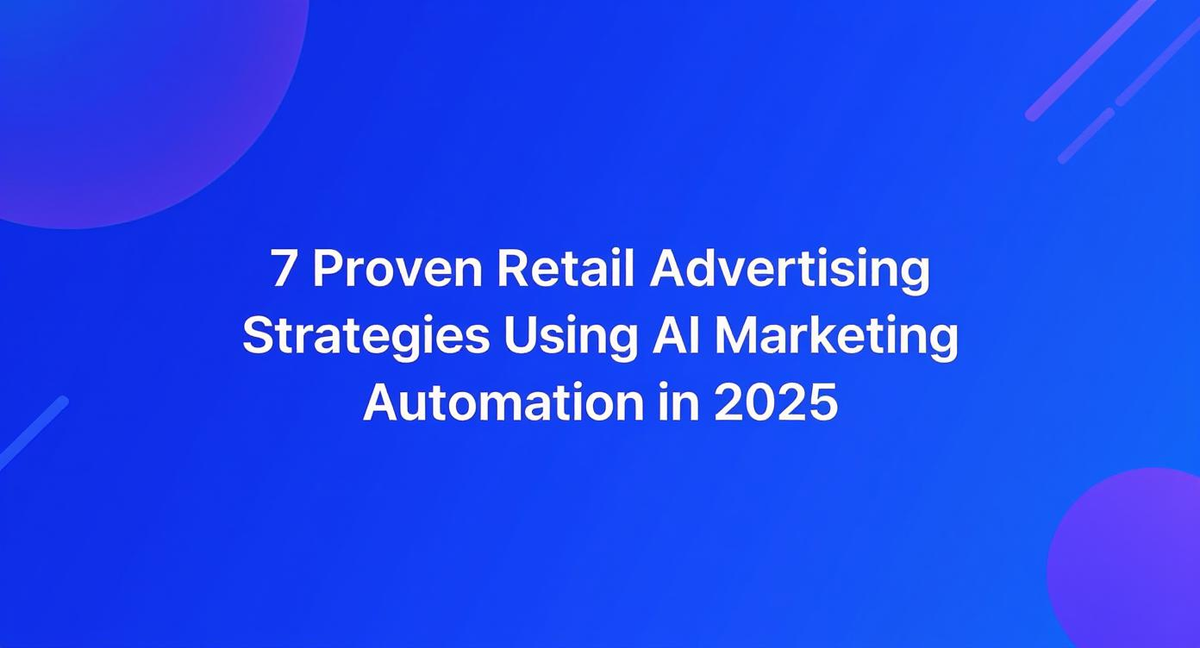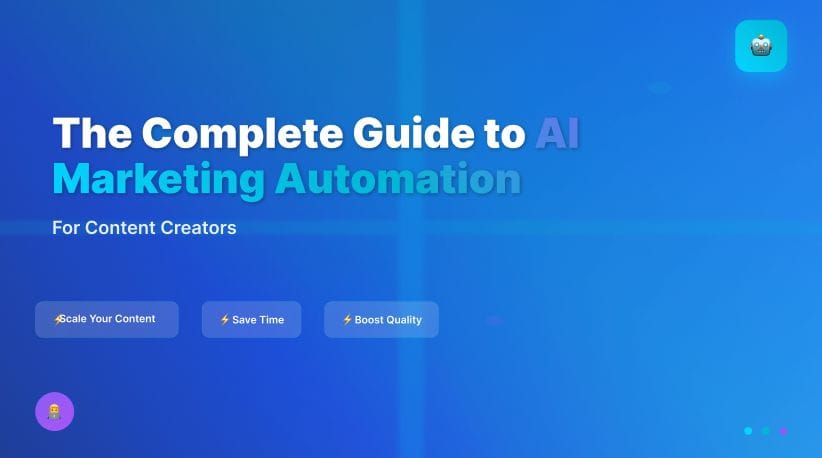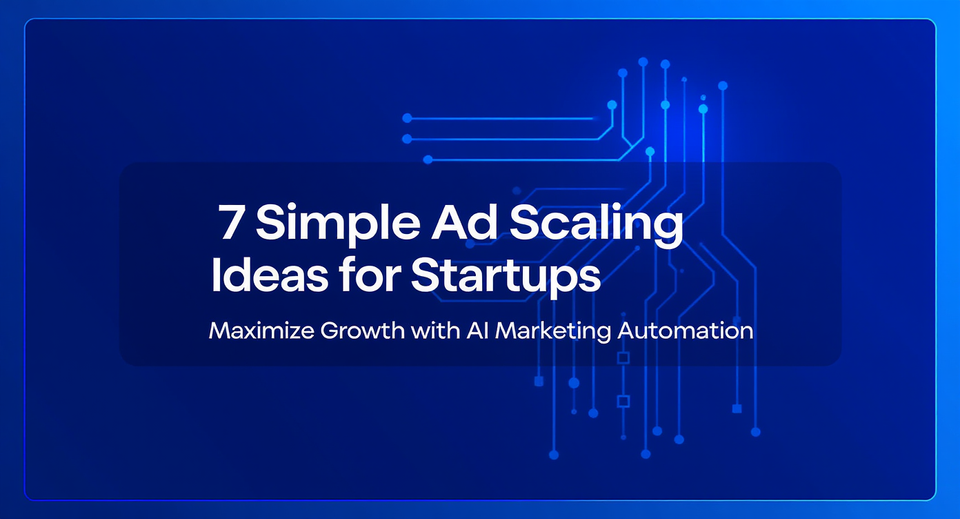7 Proven Retail Advertising Strategies Using AI Marketing Automation in 2025

The retail advertising landscape is evolving rapidly, with retail media advertising projected to reach $45 billion in the US in 2024 alone.
For retail marketing specialists, staying ahead means adopting strategies that not only capture attention but drive measurable results. This guide explores seven powerful advertising strategies that can transform your retail clients' marketing performance through AI marketing automation and advanced campaign building techniques.
1. Personalization at Scale
Personalization has moved from nice-to-have to essential in retail advertising. Research shows that 76% of consumers are more likely to purchase from brands that personalize communications, while good personalization strategies can boost ROI by up to 30%.
The challenge for many retailers is implementing personalization at scale. This is where automated marketing platforms like SurgeGrowth come in, enabling brands to launch thousands of personalized, high-performing ad creatives efficiently and on-brand. By leveraging marketing campaign builders while maintaining quality, retailers can deliver personalized messages across numerous micro-segments without overwhelming their marketing teams.
2. Creative-Led Targeting
Modern ad platforms like Meta and LinkedIn have shifted away from granular audience targeting toward algorithm-driven ad delivery based on creative relevance. This fundamental change means your creative content now does the targeting work.
Instead of relying solely on audience filters, successful retailers are using AI content creation tools to personalize creatives to specific segments—whether by location ("Fresh Produce in Downtown Chicago"), audience type ("Activewear for Yoga Enthusiasts"), or intent. This approach allows ad algorithms to match your message to the right users more effectively.
3. Data-Driven Advertising
Retail advertisers achieving the highest ROI are those making decisions based on comprehensive data analysis. This includes:
Customer Behavior Analysis: Understanding purchase patterns, browsing habits, and product preferences to inform targeting.
Performance Metrics: Tracking key indicators like ROAS, conversion rates, and customer acquisition costs across channels.
Competitive Intelligence: Monitoring competitor strategies and identifying market gaps.
By establishing robust data collection and analysis processes through AI brand management software, retailers can continuously refine their advertising approach based on actual performance rather than assumptions.
4. Omnichannel Integration
Omnichannel retail strategies drive an 80% higher rate of incremental store visits compared to single-channel approaches. Today's consumers expect seamless experiences across digital and physical touchpoints.
Effective omnichannel advertising requires:
Consistent Messaging: Maintaining brand voice and offers across all platforms.
Channel Coordination: Ensuring digital ads support in-store promotions and vice versa.
Cross-Channel Attribution: Understanding how different channels contribute to conversions.
SurgeGrowth's automated marketing platform helps retailers maintain brand consistency while scaling campaigns across multiple channels, ensuring that creative assets remain on-brand regardless of format or platform.
5. Email Marketing Optimization
Despite the rise of new channels, email marketing remains one of the most cost-effective advertising strategies for retailers, delivering an impressive ROI of $36 for every $1 spent. To maximize email effectiveness:
- Segment audiences based on purchase history, browsing behavior, and engagement levels
- Personalize content beyond just using the customer's name—include product recommendations based on past purchases
Implement AI marketing automation for abandoned carts, post-purchase follow-ups, and re-engagement of inactive customers
6. Social Commerce Integration
With social media advertising spending expected to exceed $230 billion globally by 2025, retailers must optimize their social commerce strategies. The most successful approaches include:
Shoppable Posts: Enabling direct purchases from social content.
User-Generated Content: Leveraging customer photos and reviews in advertising.
Influencer Partnerships: Collaborating with relevant influencers to extend reach and credibility.
7. AI-Powered Creative Optimization
Retailers using AI-powered personalization can boost profits by up to 15%. AI content creation tools are revolutionizing retail advertising by enabling:
Dynamic Creative Optimization: Automatically testing and refining ad elements like headlines, images, and CTAs.
Predictive Analytics: Anticipating which products and offers will resonate with specific customer segments.
Automated Campaign Management: Adjusting bids and budgets in real-time based on performance.
SurgeGrowth's platform combines AI marketing automation with human-quality outputs, making it possible to scale personalized campaigns without sacrificing brand integrity. The platform's dynamic marketing campaign builder allows for rapid experimentation with messaging, visuals, and CTAs—perfect for A/B testing and localization efforts.
Measuring Success: Beyond Traditional Metrics
For retail advertisers, success metrics should go beyond simple impressions and clicks to include:
Incremental Sales Lift: Measuring the additional sales generated specifically from advertising efforts.
Customer Lifetime Value: Tracking how advertising impacts long-term customer relationships.
Cross-Channel Impact: Understanding how digital advertising influences in-store behavior and vice versa.
Transform Your Retail Advertising Strategy
Ready to implement these powerful strategies for your retail clients? SurgeGrowth's AI brand management software enables brands to launch thousands of personalized, high-performing ad creatives—efficiently and on-brand.
Our automated marketing platform combines AI content creation tools with human-quality outputs, making it easy to scale campaigns tailored to location, audience type, intent, or behavior. With Marketing campaign builder, you can automate the production of hundreds or thousands of variants across formats while maintaining design and brand consistency.
The retail advertising landscape continues to evolve, but one thing remains constant: the brands that combine personalization, creative excellence, and data-driven decision-making through AI marketing automation will outperform their competitors. By implementing these seven strategies and leveraging the right technology partners, retail marketers can drive significant improvements in both customer engagement and bottom-line results.
FAQs:
Q: How can small retailers compete with larger brands in advertising? A: Small retailers can leverage AI marketing automation, local targeting, and creative differentiation to compete effectively without massive budgets. Focusing on niche audiences and building community through social media can also provide an edge.
Q: What's the ideal budget allocation across different advertising channels for retailers? A: While there's no one-size-fits-all answer, successful retailers typically allocate 30-40% to digital advertising (social, search, display), 20-30% to email marketing, 15-20% to traditional media, and 10-15% to in-store promotions, adjusting based on their specific customer journey and automated marketing platform capabilities.
Q: How frequently should retailers update their creative assets? A: Retailers should refresh creative assets at least quarterly, with seasonal campaigns requiring more frequent updates. Using AI content creation tools for testing new creative approaches monthly helps identify winning strategies while preventing ad fatigue.
Citations:
- Insider Intelligence, "Retail Media Advertising 2023," https://www.insiderintelligence.com/content/retail-media-advertising
- McKinsey & Company, "The value of getting personalization right," https://www.mckinsey.com/capabilities/growth-marketing-and-sales/our-insights/the-value-of-getting-personalization-right-or-wrong
- Litmus, "Email Marketing ROI Statistics," https://www.litmus.com/blog/email-marketing-roi-statistics
- Statista, "Global Social Media Advertising Spend 2025," https://www.statista.com/statistics/736971/social-media-ad-spend-worldwide/
- Google Retail, "Omnichannel Strategy Research," https://www.thinkwithgoogle.com/consumer-insights/consumer-trends/omnichannel-shopping-behavior/




